A Brief History of The Male Urinal
From Duchamp to present times

Legend has it that the earliest need for a sanitation system was recognised when a Roman centurion, returning home from duty, was "caught short" on the approach to a town. Unable to hold on any longer, he relieved himself in a culvert which, unknown to him, supplied fresh water to the town.
His actions were reported and, as a result, he was prosecuted, found guilty and sentenced to castration.
According to the legend, a separate sanitation system was subsequently devised and the centurion spent the remainder of his life in service as a eunuch.
The urinal as "art"
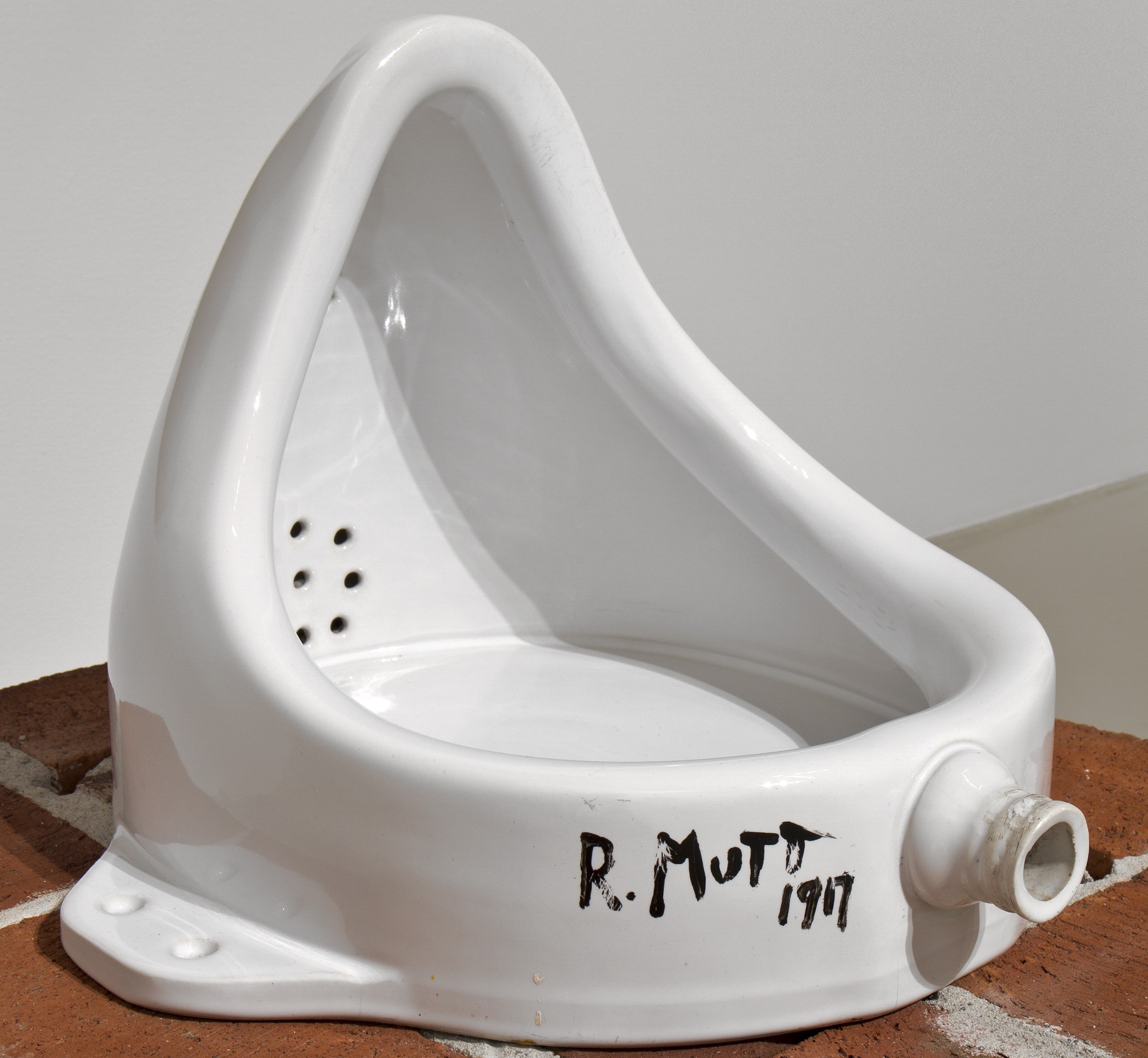 In 1917, Marcel Duchamp displayed what was probably the first public male urinal as a museum exhibit devoted to Dadaism (he called it "Fountain"). He annotated the exhibit with the gisnature of "R. Mutt 1917". This is probably a peseudonym used to introduce an element of mystery when he submitted his exhibit to the Society of Independent Artists exhibition in 1917.
In 1917, Marcel Duchamp displayed what was probably the first public male urinal as a museum exhibit devoted to Dadaism (he called it "Fountain"). He annotated the exhibit with the gisnature of "R. Mutt 1917". This is probably a peseudonym used to introduce an element of mystery when he submitted his exhibit to the Society of Independent Artists exhibition in 1917.
The urinal (pictured right) was displayed incorrectly with the drainage holes (which should lie horizontally at the bottom of the urinal) lying vertically, so that the signature (which was upside-down on top of the vertical component) could be easily read.
Over the years, most public urinals have been variations on the theme of Duchamp's "Fountain" but have been produced with differing degrees of quality and taste.
"Spicing up" the urinal
Some attempts at producing male urinals were more appealing than others. Shown below are examples of (from left to right) the good, the bad and the downright ugly ....
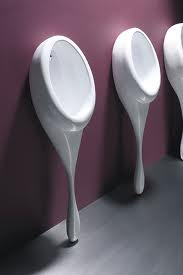
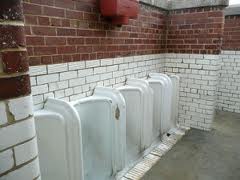
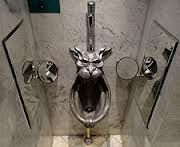
In several countries, "interactive" urinals have been produced in which the direction of the urinary stream can be used to control objects on a video screen which, at the same time, broadcasts clear warnings about the dangers of drinking and driving. In Belgium, the police disapproved of reinforcing the drink-don't-drive message in this manner, and demanded that these urinals were removed from use.
Attempts to "spice up" the appearance of the urinal have resulted in (below, from left to right) the exotic, the arty and toilets where the decorative graphics are used to embellish the room rather than the urinal itself.
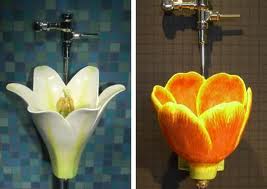
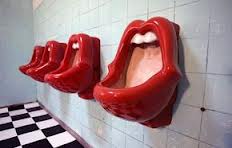
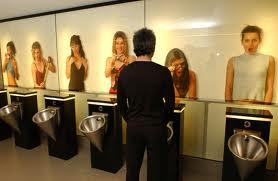
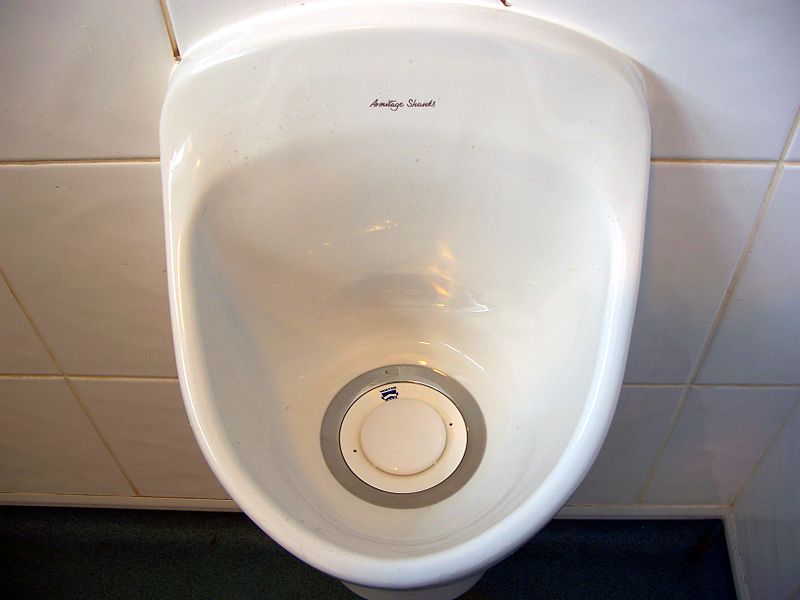 The problem of odour
The problem of odour
In an attempt to solve the age-old problem of odour, "waterless" (pictured right) and biological urinals have been developed, and are now used in many countries.
Outdoor urinals
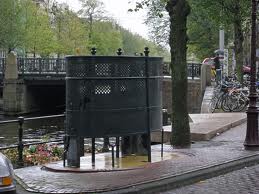 Outdoor urinals have become increasingly popular, especially at social and sporting events. Abroad, these urinals are reminiscent of the older, street-side urinalis once seen in France.
Outdoor urinals have become increasingly popular, especially at social and sporting events. Abroad, these urinals are reminiscent of the older, street-side urinalis once seen in France.
This old-fashioned pissoir or vespasienne, (pictured left), once a common site in Paris, is no longer seen in France, but some notable examples still exist in other countries e.g. Holland.
Nowadays,urinals at outdoor events range from the simple but elegant to the more functional. At sporting events, portable urinals are often seen although most are now oused in covered trailers (pictured below).
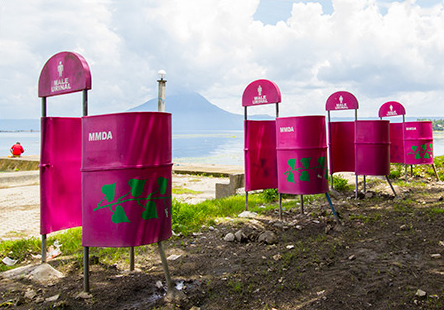
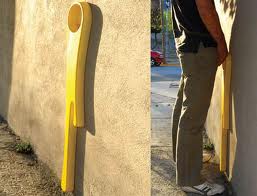
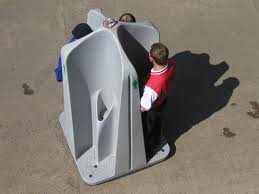
Urinals for women?
Finally, some manufacturers now produce modified urinals for women as well.
There is, however, still no reliable means of ensuring that everyone uses a urinal in the recommended manner!
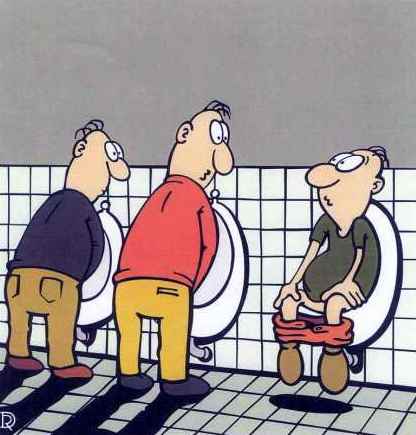
← Return to the Museum Map
← Back to Toilets